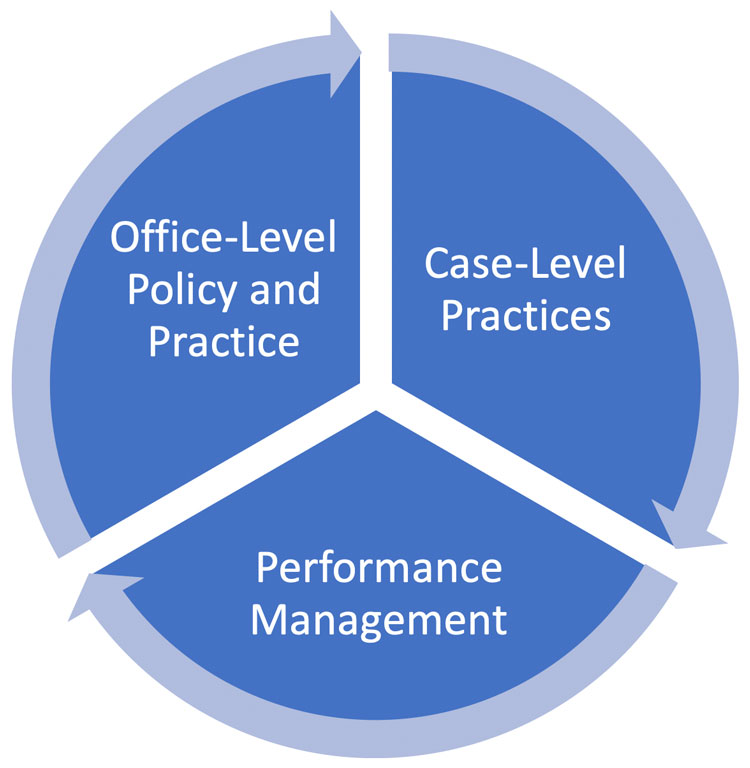How do we ensure that the promising practices described above really work — that they actually promote sustainable improvement of a jurisdiction’s sex crime response? One way is to link specific practices to their intended outcomes using a map, and to analyze whether aims can be reconciled with achievements. The conceptual model, which is essentially a graphic representation of the connection between practices and their intended outputs, helps ensure a clear and logical relationship between all elements.
The conceptual models shown on the following pages portray the RSVP Model at the office level. Specifically, they map the practices described above and illustrated their immediate intended outputs. If these are produced, the office should expect to see prompt results that ultimately lead to long-term outcomes. Long-term outcomes form the basis for a series of performance management measures that can be used as indicators for a local policymaker’s or practitioner’s continuous monitoring and assessment of their response to sexual assault. See RSVP Volume II for more on performance management.
EXHIBIT 2-3
RSVP Conceptual Model
The RSVP Model assumes change occurs at multiple levels for the prosecution — namely at the office and case processing levels. Office-level policies emphasize leadership in prosecuting sexual assault and laying the foundation for effective case processing. They encourage case processing practices consistent with best practices, and as shown on the next page, those based on the RSVP Model lead to data-driven, victim-centered, trauma-informed, and offender-focused case processing practices. These practices produce specific measurable performance outcomes that in turn inform future office policies.
EXHIBIT 2-4
Office Policy & Practice Conceptual Model123
Effective responses to sexual assault must be driven by the establishment of office-wide practices that allow prosecutors to provide leadership to their staff and partner agencies involved in the investigation and prosecution of sex crimes. The model below has three main elements: policy and practice, outputs, and outcomes. The information in the “policy and practice” box describe actions that office leadership should take to ensure effective responses to sexual assault. Each policy or practice should produce a specific and immediate result (the output). For example, the regular analysis of attrition, sexual assault prosecutions, and outcomes (the policy/practice) will produce a better understanding of prosecution rates and case outcomes. The outputs indicate whether progress is being made toward achieving the general outcome of improving the office’s overall response to sexual assault. RSVP Volume II provides more detail about how these outcomes are measured.
123 See RSVP Volume II for an office-level logic model incorporating performance management. A logic model is a visual roadmap to connect the problem, the ultimate intended outcome or solution, and the supporting steps to get to the solution.


